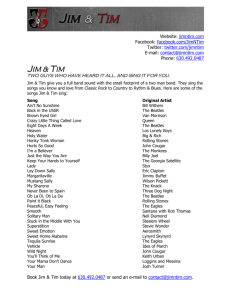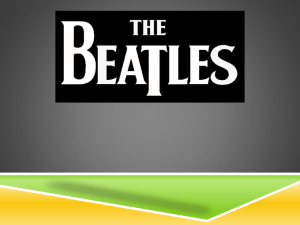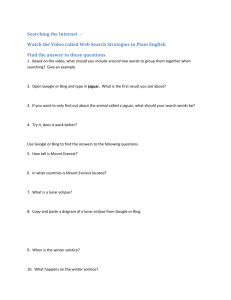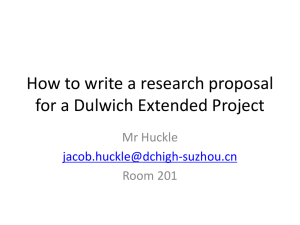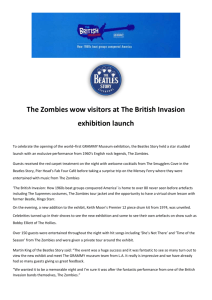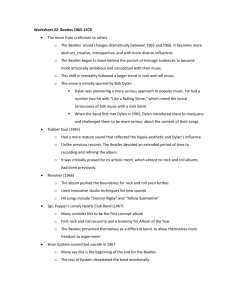Turning the Beatles` Oeuvre Into a Scholarly Pursuit
advertisement
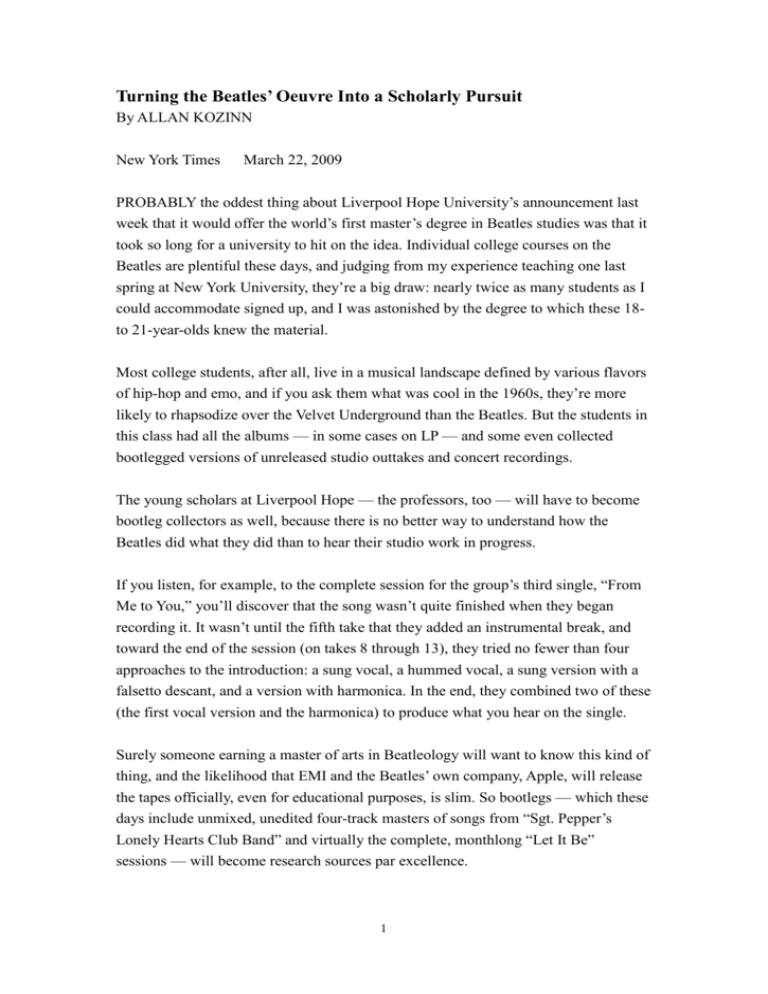
Turning the Beatles’ Oeuvre Into a Scholarly Pursuit By ALLAN KOZINN New York Times March 22, 2009 PROBABLY the oddest thing about Liverpool Hope University’s announcement last week that it would offer the world’s first master’s degree in Beatles studies was that it took so long for a university to hit on the idea. Individual college courses on the Beatles are plentiful these days, and judging from my experience teaching one last spring at New York University, they’re a big draw: nearly twice as many students as I could accommodate signed up, and I was astonished by the degree to which these 18to 21-year-olds knew the material. Most college students, after all, live in a musical landscape defined by various flavors of hip-hop and emo, and if you ask them what was cool in the 1960s, they’re more likely to rhapsodize over the Velvet Underground than the Beatles. But the students in this class had all the albums — in some cases on LP — and some even collected bootlegged versions of unreleased studio outtakes and concert recordings. The young scholars at Liverpool Hope — the professors, too — will have to become bootleg collectors as well, because there is no better way to understand how the Beatles did what they did than to hear their studio work in progress. If you listen, for example, to the complete session for the group’s third single, “From Me to You,” you’ll discover that the song wasn’t quite finished when they began recording it. It wasn’t until the fifth take that they added an instrumental break, and toward the end of the session (on takes 8 through 13), they tried no fewer than four approaches to the introduction: a sung vocal, a hummed vocal, a sung version with a falsetto descant, and a version with harmonica. In the end, they combined two of these (the first vocal version and the harmonica) to produce what you hear on the single. Surely someone earning a master of arts in Beatleology will want to know this kind of thing, and the likelihood that EMI and the Beatles’ own company, Apple, will release the tapes officially, even for educational purposes, is slim. So bootlegs — which these days include unmixed, unedited four-track masters of songs from “Sgt. Pepper’s Lonely Hearts Club Band” and virtually the complete, monthlong “Let It Be” sessions — will become research sources par excellence. 1 Studying the Beatles seriously inevitably brings together an enormous amount of material, certainly enough to push the limits of a four-semester program. To understand the group’s prehistory, for one thing, students will have to delve into not only the American roots of rock — blues, country music and R&B — but also Broadway show tunes and the British music-hall tradition, which shaped them as surely as Chuck Berry and Elvis Presley did. Mark Lewisohn, author of several exhaustive books about the Beatles recordings and performances (“The Beatles Recording Sessions” and “The Complete Beatles Chronicles” will have to be at the top of the curriculum’s reading list) considers the prehistory so important that the first volume of the three-volume biography he is writing will take the story only through 1963. Liverpool Hope University has a distinct advantage for this part of the course work: although students will have to learn to see through the parts of Liverpool that have become a kind of Beatles Disneyland, many of the places where they lived and worked (or even places they merely mentioned, like Penny Lane) are intact. If you study the Beatles there, the geography of their early years becomes real. But you’ll want to dig into the sociology of down-and-out postwar Liverpool as well: all that helped make the Beatles the Beatles. One could reasonably ask, of course, what a graduate will do with a master’s in Beatles studies. Who knows? The musicians among them might profitably internalize the values they’ll learn — the Beatles’ insistence on innovation from disc to disc, their high standards for lyric and melody writing, and the freedom they gave themselves to make experimental works like “Revolution 9.” Budding social scientists, more focused on the latter part of the program’s title — “The Beatles, Popular Music and Society” — might look earnestly at the social upheaval the Beatles helped usher in. They were, after all, four guys in their 20s with the wherewithal to go wild and kick down as many social restrictions as they could. The rest of us looked at them and said, “That seems like fun!” and followed suit. But a sober young scholar, 40 years later, might examine the ’60s social revolution and where it led, and ask whether it was unequivocally for the best. The Beatles themselves have had mixed feelings about being the focus of scholarly study. George Harrison took the view that if you weren’t there, you couldn’t know what really happened (yet in the making of “The Beatles Anthology,” he insisted that 2 the Beatles played at Shea Stadium only once, in 1965, until he was shown film of their second appearance, in 1966). Ringo Starr has sometimes taken a similar view. When I asked him why he had said in a radio interview that the Beatles opened their 1965 concert at Shea with “I’m Down” — a song that was written as a set closer and never opened any of their concerts — he said he was given bad information. “I had a guy like you with me,” he quipped. “A little mad Beatles professor.” John Lennon was murdered before colleges began teaching the Beatles, but he vacillated between extreme pride in the group’s work, and comments like, “It’s nothing important — it was just a rock group.” And Paul McCartney has said that he likes the idea of people studying the Beatles work, but he also seems embarrassed by it: in recent interviews, he has pretended that he can’t remember which came first, “Rubber Soul” or “Revolver.” My advice to Liverpool Hope’s students is to pay no attention to those four men behind the curtain — or at least to take what they say now with a grain of salt. The music is there, and so is the documentation from the time, waiting to be dug into. And that’s where the real story is. 3
